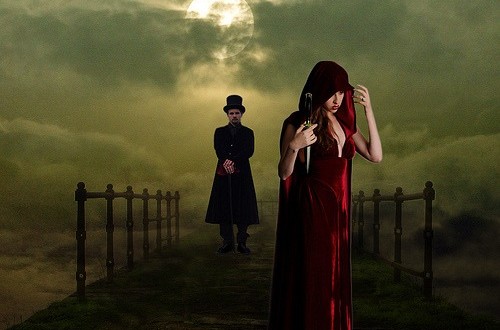An ex-homicide detective believes he has answers to one of the most baffling mysteries of all time — the identity of Jack the Ripper. He claims the infamous serial killer never existed at all.
When a rash of violent murders occurred in London in the late 19th century, citizens and authorities alike were both terrified and bewildered. The string of murders were blamed on an individual the media dubbed “Jack the Ripper.” While the deaths of five female victims in the Whitechapel district left behind plenty of evidence, no one was arrested for the grisly murders.
The Jack the Ripper case has been associated with a variety of wild explanations as to “whodunit,” and the suspects have included “Alice in Wonderland” author Lewis Carroll, Queen Victoria’s grandson, the Duke of Clarence and even a Sioux Indian warrior called Black Elk.
In total Mr Marriott has discovered 17 unsolved Ripper-like murders committed between 1863 and 1894. He believes a German merchant seaman called Carl Feigenbaum was responsible for some, but not all of those killings.
Feigenbaum was a crew member on ships that regularly docked near Whitechapel. He was executed in New York in 1896 after being caught by US police fleeing the scene of a Ripper-style murder there.
“The reality is there was just a series of unsolved murders and they would have sunk into oblivion many years ago, but for a reporter called Thomas Bulling,” said Mr Marriott.
Bulling was a drunken journalist with many police contacts at Scotland Yard, who in 1888 was working for the London-based Central News Agency. He was paid to supply crime stories for newspapers.
“Police got a letter that Bulling had written about the murders which he signed ‘Jack the Ripper’,” said Mr Marriott.
“It was the most ingenious piece of journalism that has kept this mystery alive for 125 years. Even now any modern-day serial killer is called a ‘Ripper’.
“You have to ask yourself if ‘Jack’ is an urban myth. Around 80 per cent of the books about him have a picture of a chap on the front stalking the streets of London in a long black cape and a top hat.
“They were the clothes of an upper class, wealthy man. But back in 1888 if someone dressed like that had actually walked around Whitechapel in the dead of night they wouldn’t have lasted five minutes.
“It wasn’t just one of the most crime-riddled areas of London, it was one of the worst areas in the country. It’s a false image that has been created by the likes of Hollywood film makers.
“New facts have come to light, we’ve now disproved the claim that the killer removed organs from the victims at the scenes of the murders, the organs were removed later once they were in a mortuary.
“There just isn’t a Jack The Ripper as such.”
But the interest in the Ripper murders is still so strong that just this month the East London Advertiser, the newspaper that covers the Whitechapel area published a 12-page souvenir pull out to mark the 125th anniversary of the crimes.
Meanwhile Trevor Marriott is mid-way through a 36-date theatre tour of the UK with his one man show called “Jack The Ripper A 21st Century Investigation” in which he reveals the research he has done and the forensic evidence that he says finally reveals the real story about the killings.
 Canada Journal – News of the World Articles and videos to bring you the biggest Canadian news stories from across the country every day
Canada Journal – News of the World Articles and videos to bring you the biggest Canadian news stories from across the country every day



